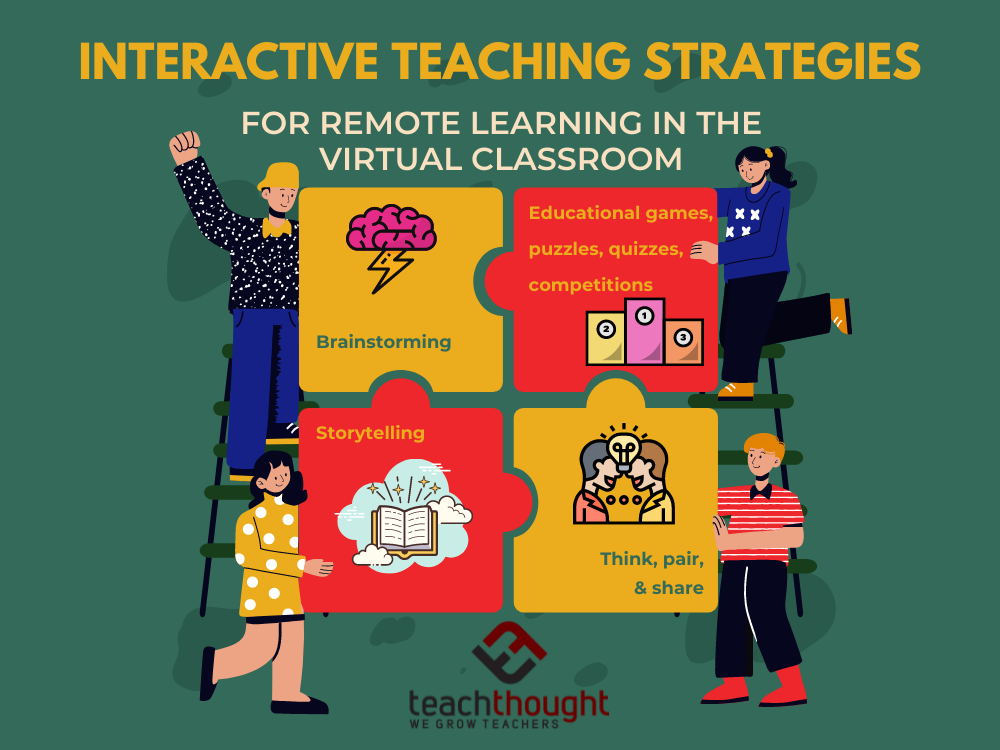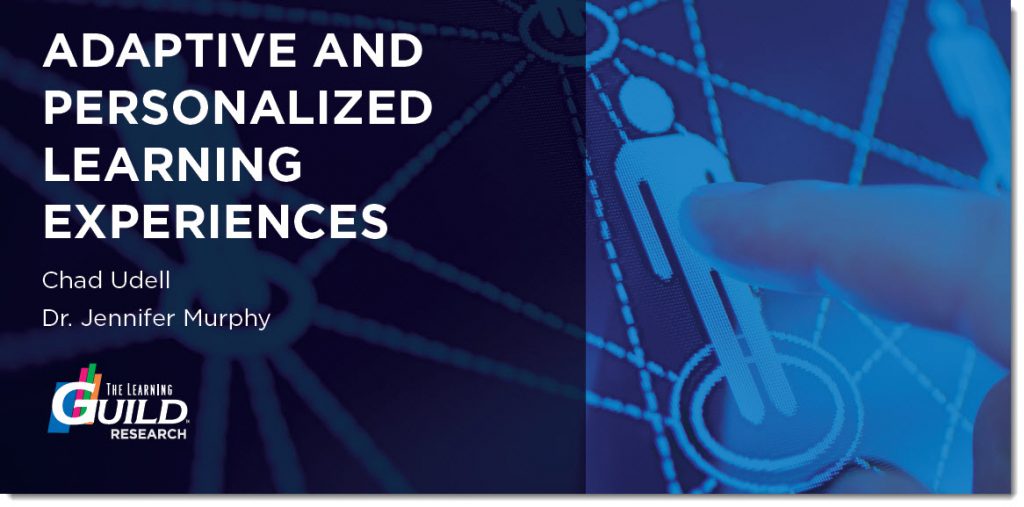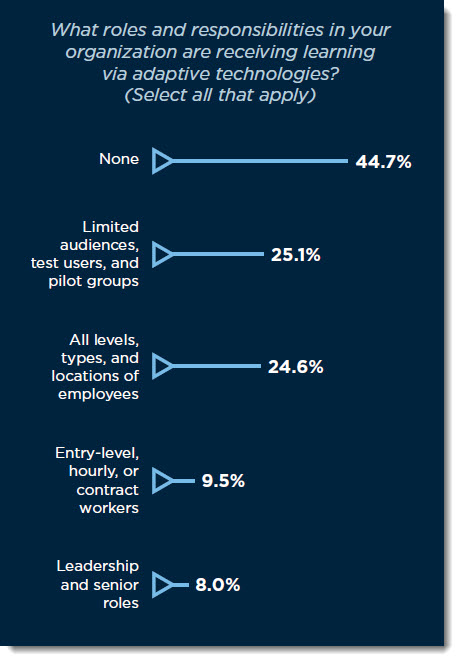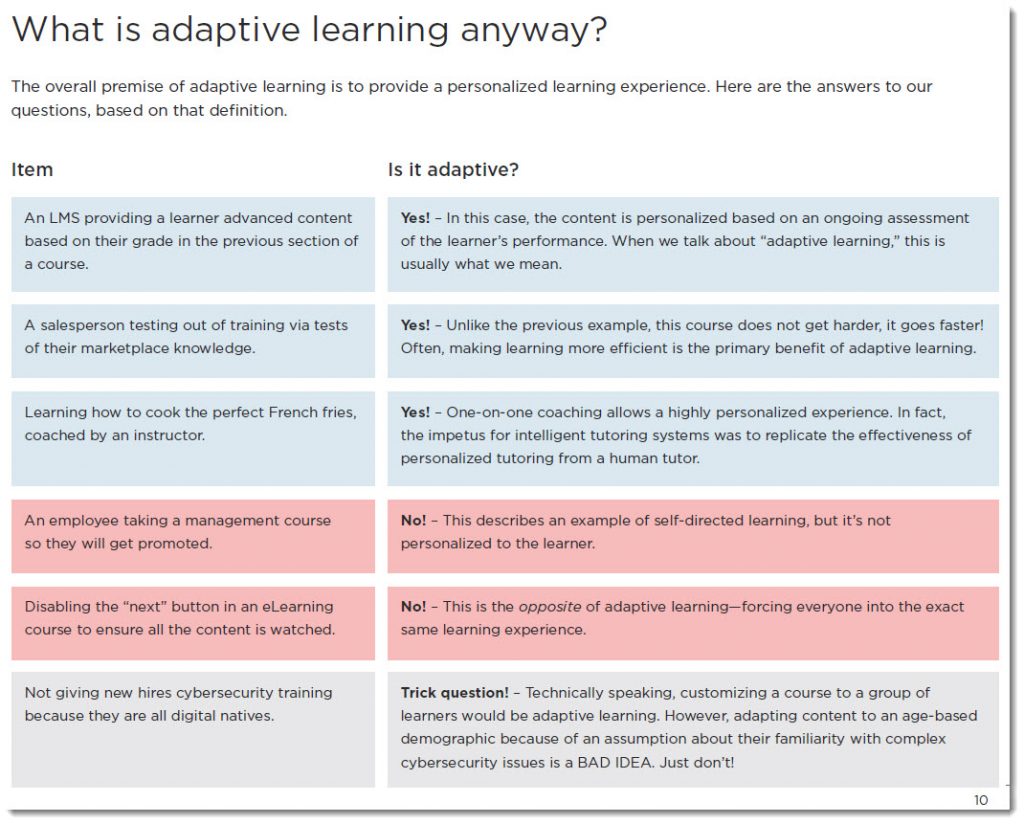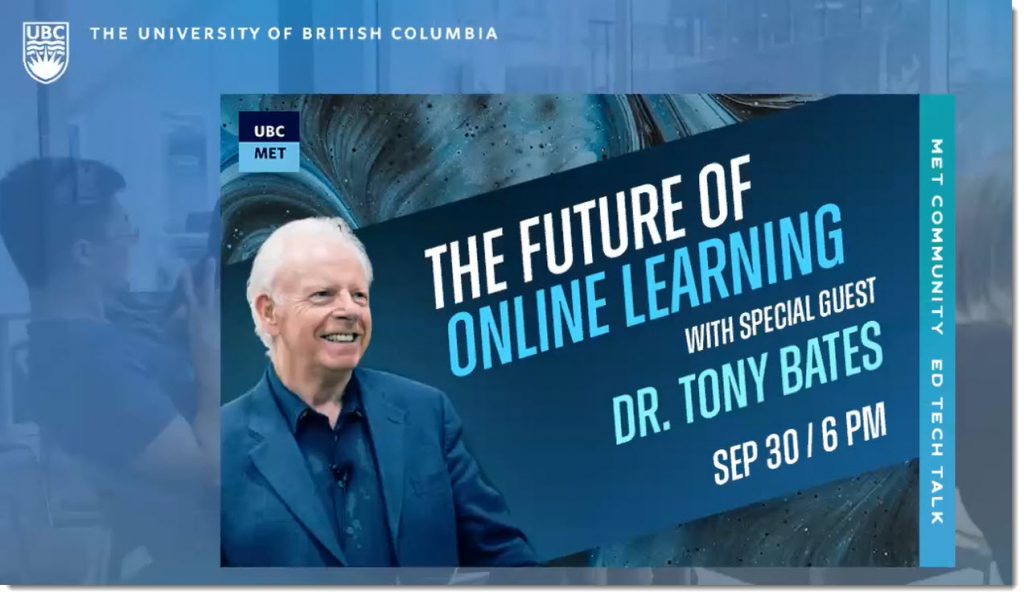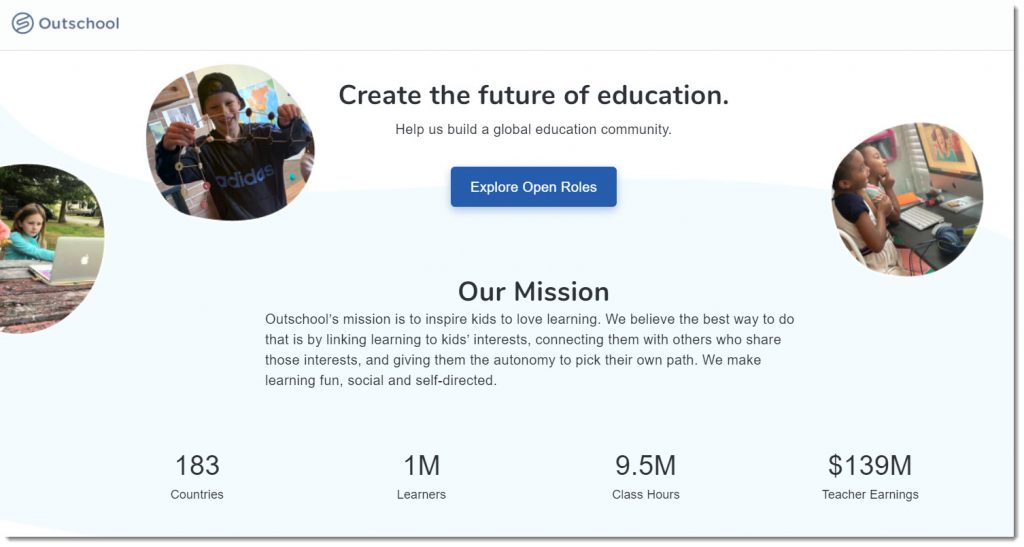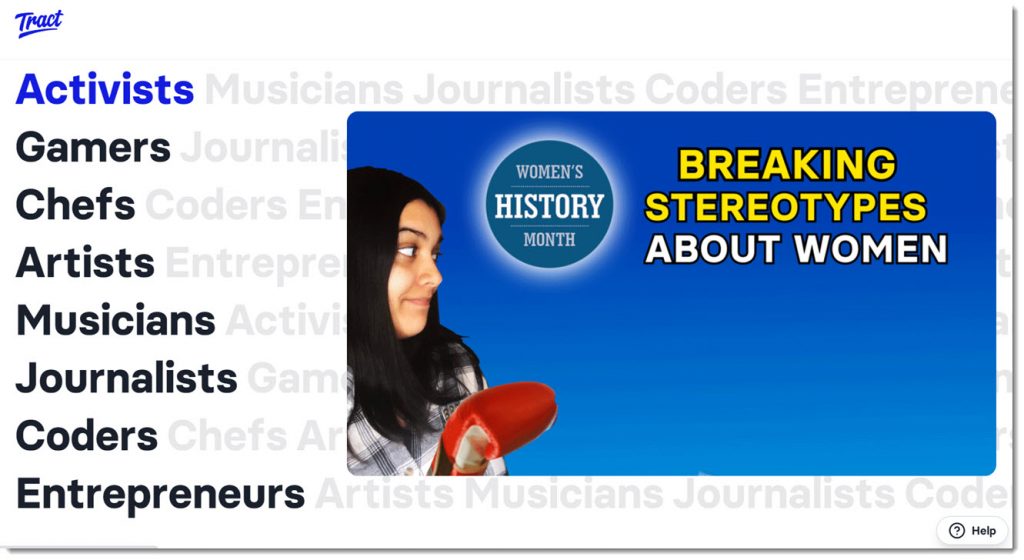Supporting Student Accessibility: Digital Equity | Special Needs & More — from Tech & Learning | November 2021
What Are The Best Online Teaching Strategies For eLearning Classrooms? — from teachthought.com
From DSC:
I was reading about a Ph.D. who was currently doing some research into the science of learning. This person had been teaching in a School of Education for years, but just (relatively) recently embarked on a Ph.D. During this person’s research, they came across a lot more information regarding the science of learning.
If this was true with someone who had been in education for years (and I can relate to that as well), it made me wonder:
- How can we better get the word out to our learners re: how they can maximize their Return On Investment (ROI) from their studying time and efforts…?
Then I thought, why couldn’t we put these tips directly into our banners on our CMS’s and LMS’s and/or link our banners to some other web pages/resources that provide such best practices and tips for our learners!?! This could occur within the corporate training world as well.
Examples:


Along these lines, we should have 11×17 (or larger) posters like this plastered in every hallway of every learning space out there:
Adaptive and Personalized Learning Experiences — from learningguild.com by Chad Udell and Jennifer Murphy
Excerpts:
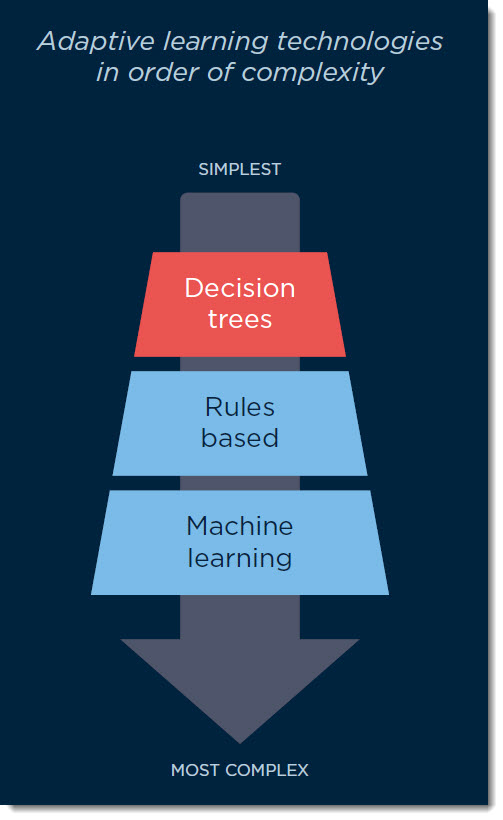
A Crusade to End Grading in High Schools — from washingtonpost.com by Thomas Toch and Alina Tugend; with thanks to Ryan Craig for this resource
One educator is leading an effort to evaluate students differently. Can it catch on?
Excerpt:
He envisioned schools where students learned math, history and science not as isolated subjects in classroom-bound courses but while working together to address real-world issues like soil conservation, homelessness and illegal immigration. Such learning would make schooling more meaningful for students and thus more engaging, Looney believed. It would let students demonstrate more talents to colleges, holding out the prospect of a wider, more diverse range of students entering higher education’s top ranks.
The existing high school transcript, however, with its simple summary of courses and grades, wouldn’t do justice to the interdisciplinary, project-based learning he wanted. It wouldn’t capture students’ creativity, persistence and other qualities. Looney needed a radically different way to portray students’ high school experiences, one that replaced grades with a richer picture. But he didn’t know what it was.
Today, 275 private high schools and 125 public schools are part of the nonprofit Mastery Transcript Consortium (MTC). They are in various stages of designing and launching the transcript — and working to make Looney’s radical vision a reality. Started in 2017, the organization is expanding rapidly.
How to Get Students to Watch Your Videoshttps://t.co/m2EeDAkHqq pic.twitter.com/L8mMQIsXqg
— Daniel Christian (he/him/his) (@dchristian5) November 1, 2021
Why we need some humility about online learning – and about face-to-face teaching — from tonybates.ca by Tony Bates
Excerpt:
Those of us who have been fighting to get online learning accepted over the last 20-25 years have argued strongly the merits of online learning. We have argued that not only can it increase access, especially for older, working and lifelong learners, but it can also teach as well, and under certain circumstances, even better than face-to-face teaching. Covid-19 in particular showed the value of online learning, allowing students to continue their learning, even during a pandemic.
The limits of online learning
However, Covid-19 also taught us that online learning has its limits. When there was no access to face-to-face learning, we found that online learning was not able to help certain students. We also found that there are important aspects of face-to-face or campus based learning that cannot easily be replaced by online learning. Let’s look at some of these limitations.
We need to not only accept that both online learning and face-to-face teaching have equal value, but also to strive to understand what each does best. This will vary by subject matter, by types of students, and by instructors’ training and experience. We all have a lot to learn.
Also from Tony, see:
The Great Education Unbundling and How Learning Will be Rebundled — from gettingsmart.com by Nate McClennen, Tom Vander Ark
Key Points
- The pandemic accelerated the great unbundling of learning – at least for those with access, agency, and advocates.
- While unbundling will expand, how learning is rebundled will emerge as the next innovation — accessible, personalized, accountable and massive.
Excerpts:
By removing the barrier of full credit/school offered, schools become more robust in terms of richness of offerings as well as more personalized to meet the needs of students and communities.
The majority of unbundled experiences still fall back on the course level as the smallest granular level of choice. Following the lead of industry, unbundling in schools should mean a reduction in grain size so that skills are the level of unbundling rather than courses.
50 Sites & Apps for K-12 Education Games — from techlearning.com by Diana Restifo and David Kapuler
Game-based learning is a great way to integrate technology into the classroom while engaging kids with real learning.
Excerpt:
Game-based learning turns potentially tedious study time into an adventurous knowledge quest, complete with catchy soundtracks and digital rewards. It helps keep kids engaged with the subject matter and motivated to pursue greater expertise. Best of all, web- or app-based gameplay integrates easily into both online and in-person classes.
With the demise of Flash at the end of 2020, many favorite educational game sites went under. That’s why we decided to update our popular list below to include the latest and best sites and apps for K-12 education games. Many are free (or offer free basic accounts) and some provide progress tracking and analysis tools for teachers. All will help kids enjoy learning.
Also relevant/see the following resource and excerpt from Goldie Blumenstyk’s The Edge (from the Chronicle of Higher Education)
Creative Acts for Curious People: How to Think, Create, and Lead in Unconventional Ways — by Sarah Stein Greenberg
Excerpt:
Greenberg also makes a compelling case for the “playful and joyous” approaches the d.school has been championing, like the secret handshake or building several prototypes of an ideal chair using tools like cardboard, pipe cleaners, and chewing gum and toothpicks. After so many months of loss and social deprivation, she told me last week, “those elements are more important than ever.”
From DSC:
Perhaps folks might want to experiment with the teaching strategy as mentioned below from Dr. Barbi Honeycutt’s Lecture Breakers Weekly e-newsletter.
From The Scholarly Teacher blog — who just added a new section on the blog which includes teaching tip infographics.
This week, they shared variations of Think, Pair, Share. In this teaching strategy, you give the students a problem or question. Then, you ask them to think about the question, pair up with a partner to discuss it, and then share it with the rest of the class (hence the name “think, pair, share”).
In this adaption, you do the same process, but instead of asking them to share with the class, you ask them to post a tweet using a class hashtag. Then you can read the tweets aloud, integrate them into your lecture, and/or facilitate a class discussion. This teaching strategy works well for blended, in-person, and online course formats, so it’s very adaptable to any topic or lesson.
@CanvasLMS users, checkout this great article on creating e-learning content. #CanvasLM #CanvasFAM https://t.co/TgYrHbX35z
— Jim Wolf M.S.Ed., M.S.Ed.I.T. (@wjameswolf) October 5, 2021
Here’s an example of what an engaging and exciting online course might [look like].
You start with a short video that introduces the subject. It focuses on the course’s main ideas, and how they relate to one another, getting your learners interested in the topic and making them eager to learn more.
3 Promising Opportunities to Teach Your Kids From Home — from medium.com by Eva Keiffenheim
These organizations innovate homeschooling.
Excerpt:
What follows are three organizations that rethink the way children learn from home.
From DSC:
My wife teaches for Outschool and really enjoys it! She develops solid relationships with her students and is able to personalize things (as she deals with 1-3 students at a time). She doesn’t charge much at all, but she enjoys it.
Tools to make timelines — from @jeremycaplan https://t.co/7vnSEsc4mT
— Daniel Christian (he/him/his) (@dchristian5) October 14, 2021
3 Tips for Making Passion-Based Learning Work Successfully — from thejournal.com by Dennis Pierce
Excerpt:
Passion-based learning, a form of self-directed learning in which students pursue projects of interest to them, is becoming more popular in schools — and for good reason: Educators who have set aside time for passion-based learning have discovered that students become highly engaged and motivated when learning about topics that intrigue them, while taking their learning much deeper than they would in a traditional lesson.
Passion-based learning initiatives include Genius Hour and 20time, both inspired by Google’s program that lets employees spend 20% of their time on projects of their choosing to spark innovation.
Giving all students the option to explore their interests can be challenging on a large scale. To overcome this hurdle and make the process easier for teachers, Sonora Elementary uses a new peer-to-peer learning platform called Tract, which is a collection of video content organized into self-directed learning paths.
From DSC:
I love the type of tool/app like Tract — as students can work on a variety of skills:
- multimedia development
- music
- acting
- writing/composing
- digital storytelling
- …and more
Such projects/tools can unleash a great deal of creativity, engagement, and positive energy. Learning becomes more relevant, enjoyable, and interesting when we can provide more choice and control to our students.
Make learning engaging in any environment – from issuu.com [Tech & Learning Oct 2021 issue] by Erik Ofgang
Excerpt:









